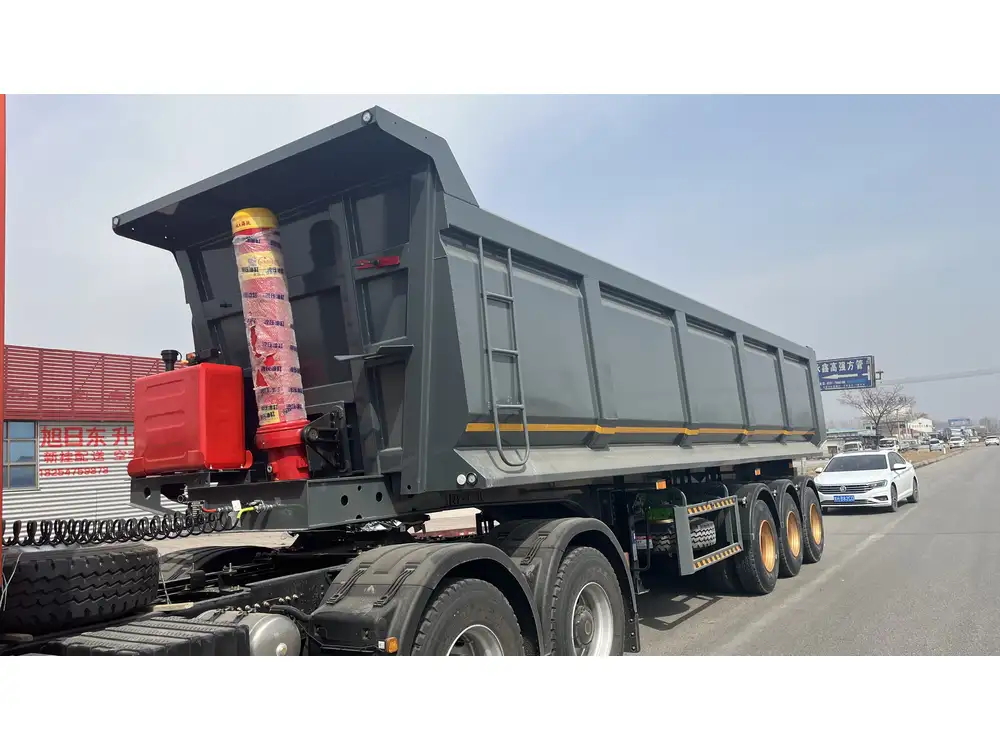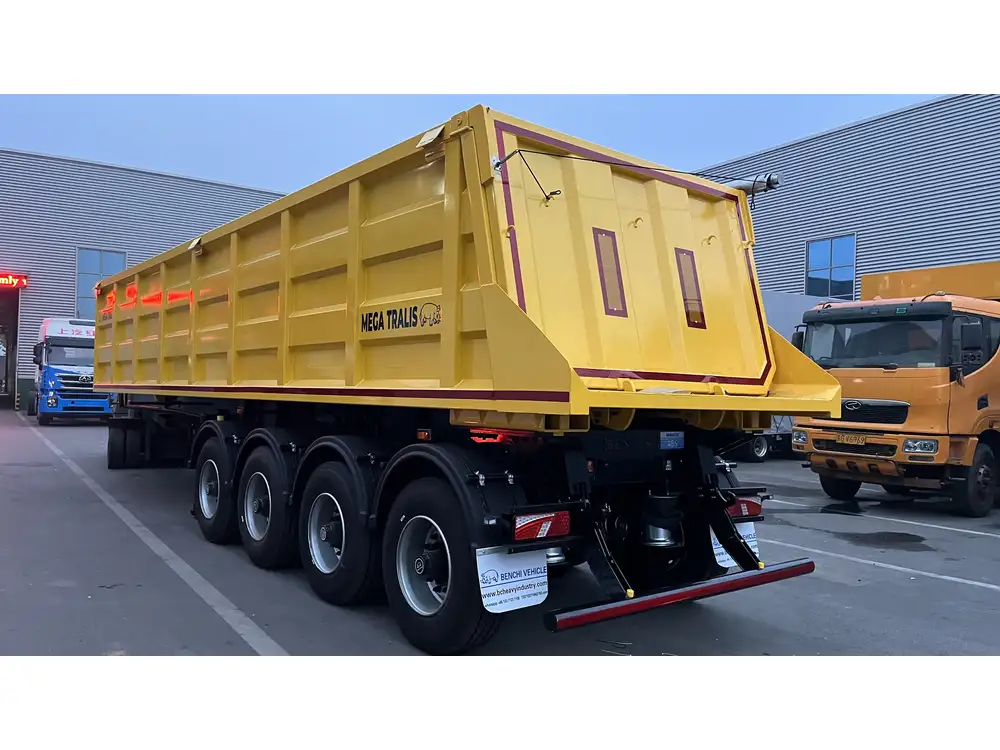In the intricate world of logistics and transport, ensuring that your assets are fortified against potential risks is of paramount importance. Semi-trailers, despite their robust construction and utility in hauling cargo, are still vulnerable to a host of threats—ranging from accidents to theft. Adequate insurance coverage can provide peace of mind and financial security. Let’s navigate the complexities of securing insurance for your semi-trailer, ensuring every aspect of your investment is well-protected.
Understanding Insurance for Semi-Trailers
Before delving into the practical steps, it’s essential to grasp the categories of insurance coverage available for semi-trailers.
| Type of Coverage | Description |
|---|---|
| Liability Insurance | Covers damages to other vehicles/property in accidents you cause. |
| Physical Damage Insurance | Protects your semi-trailer against damages from accidents, theft, etc. |
| Cargo Insurance | Insures the cargo being transported within the trailer. |
| Comprehensive Insurance | Covers non-collision events, such as fire or vandalism. |
| Uninsured/Underinsured Motorist | Protects you if you’re in an accident with a driver who lacks insurance. |
Each type of insurance plays a crucial role in safeguarding your semi-trailer and the cargo it carries. Assessing your specific needs based on your operation scale and transport frequency can help inform your insurance purchasing decisions.
Steps to Add Insurance on a Semi-Trailer
Understanding the process of adding insurance to your semi-trailer is essential. Below is a structured approach to ensure you don’t miss any critical steps.

Step 1: Assess Your Insurance Needs
- Evaluate Your Assets: Determine the value of your semi-trailer and any cargo you typically transport.
- Identify Risks: Assess potential risks specific to your business operations—road conditions, delivery routes, types of payload, etc.
- Determine Coverage Types: Based on your assessments, decide on the types of insurance coverage that suit your needs.
Step 2: Research Insurance Providers
| Criteria | Details |
|---|---|
| Reputation | Look for reputable insurance companies with positive reviews. |
| Specialization | Ensure they specialize in commercial vehicle insurance. |
| Coverage Options | Compare the different types of coverage offered by each provider. |
| Customer Support | Assess the customer service provided, especially during claims. |
Evaluate insurance companies that focus on commercial vehicle coverage. Engage with providers to discuss your specific needs and obtain comprehensive proposals.
Step 3: Gather Necessary Documentation
To facilitate the insurance application process, prepare the following documents:
- Vehicle Identification Number (VIN): Required for identification of the trailer.
- Proof of Ownership: Documentation proving that you own the trailer.
- Title and Registration: Relevant registration documents for the semi-trailer.
- Business Information: Details about your logistics company, including operational history and scope.

Step 4: Request Quotes
After shortlisting insurance providers, reach out to them for insurance quotes. When requesting quotes:
- Be specific about your needs and the types of coverage required.
- Inquire about any discounts for bundling multiple coverage options.
- Ask about payment plan options, which can ease the financial burden of premiums.
Step 5: Compare Quotes and Coverage Options
Don’t just focus on the premium amount; consider the breadth of coverage offered in each quote:
| Provider | Monthly Premium | Liability Coverage | Physical Damage Coverage | Cargo Coverage | Deductible |
|---|---|---|---|---|---|
| Company A | $200 | $1,000,000 | $80,000 | $100,000 | $500 |
| Company B | $250 | $1,500,000 | $75,000 | $150,000 | $1,000 |
| Company C | $180 | $1,000,000 | $100,000 | $120,000 | $300 |
Step 6: Choose Your Policy
Once you have analyzed the quotes, it’s time to make a decision:
- Select a policy that offers a balance between cost and adequate coverage.
- Pay attention to any exclusions in the policy that could affect claims.
- Clarify any terms and conditions with your insurance agent before finalizing.

Step 7: Complete the Application
Fill out the required insurance application forms. Provide all the necessary information accurately, as inaccurate details can jeopardize your coverage.
Step 8: Review and Sign the Policy
Once you’ve submitted your application, the insurance provider will review it. They may request additional documentation or clarification during this process. Upon approval:
- Review the terms of the policy thoroughly.
- Confirm the start date of coverage.
- Ensure you receive all necessary policy documents and contact information for claims.
Important Considerations When Adding Insurance
When adding insurance to your semi-trailer, there are several key aspects to keep in mind:

1. Understand Policy Exclusions
Policies often contain exclusions that outline what is not covered. Examples include:
- Damage resulting from inadequate maintenance of the trailer.
- Theft that describes negligence, such as leaving the trailer unlocked.
- Accidents occurring while using the trailer for unlawful activities.
2. Keep Track of Policy Renewals
Ensure you are aware of policy expiration dates to avoid lapsing coverage. Setting reminders or opting for automatic renewal can help maintain continuous coverage without interruption.
3. Regularly Review Your Coverage Needs
As your business grows and changes, so too should your insurance policy:
- Reassess your coverage needs at least annually.
- Inform your insurer about any changes in your business that might require additional coverage.

4. Invest in Additional Risk Management Strategies
In tandem with insurance, consider investing in preventive measures to reduce the risk of accidents and losses:
- Regular maintenance schedules for your semi-trailer.
- Implementing GPS and tracking devices to recover stolen trailers.
- Training drivers in safe driving and defensive driving techniques.
Common Questions About Semi-Trailer Insurance
Q: Do I need special insurance for my semi-trailer if I lease it?
- Yes, leased semi-trailers require specific coverage. Review your lease agreement; it may necessitate comprehensive insurance to cover damages.
Q: How can I reduce my semi-trailer insurance premiums?
- Engage in safety training and implement risk management measures. Inquire about multi-policy discounts or loyalty programs with your insurer as well.
Q: What constitutes a “total loss” in semi-trailer insurance?
- A semi-trailer is classified as a total loss when the cost of repairs exceeds its actual cash value. In this scenario, the insurer typically reimburses you based on the trailer’s market value.
Conclusion
Adding insurance to your semi-trailer is not merely a regulatory requirement; it is an essential safety net that protects both your assets and your livelihood. By navigating the process meticulously—understanding your needs, researching various providers, gathering documentation, and maintaining ongoing communication with your insurer—you can secure the most relevant and beneficial insurance coverage for your semi-trailer. As you embrace these measures, remember that your coverage should evolve alongside your business, adapting to new challenges and operational demands effectively. Protecting your semi-trailer means you can focus on what truly matters: delivering your cargo safely and efficiently.



